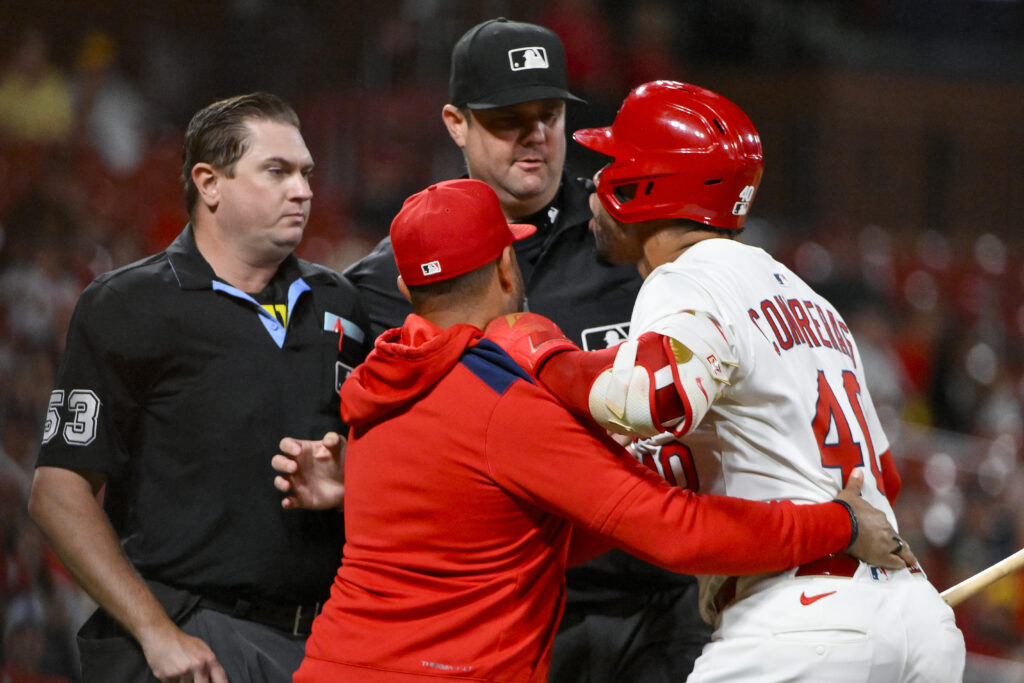MLB’s spring training is off and running with games being played all of last week. There are plenty of spring training takeaways that could grab your attention. Split squads, extended appearances, and young prospects have been seen in all of Florida and Arizona camps. This past week will be the only time this spring majority of the game’s biggest stars will be with their professional clubs before heading out to represent their countries in the WBC. Let’s take a look at a few spring training takeaways from week one.
Week One Spring Training Takeaways
Pitch Clock
Baseball fan or not, I’m sure at some point in the last week and a half you have heard about the new pitch clock rule in MLB. A lot of mixed reviews early on from those who have watched the games this spring. I have to say, it isn’t that bad, right?
Heading into the new season, I was skeptical about the idea of placing a timer on both pitcher and batter in-between pitches thrown throughout a game. But after watching multiple games from multiple teams this spring, the pitch clock is something that doesn’t really stand out as much as I originally thought it would.
If there were any spring training takeaways prior to the season I thought would be the most impactful, it would be this. So far MLB and more importantly the players have taken a very big step forward in navigating through the beginning of this new era. Of course, there are going to be growing pains, much like anything new. However, if you take a look at the tweet below, you can see the progression players have made throughout just the first few days of spring games.
Pitch clock violation update:
First 35 spring games —> 69 (1.97/game)
Next 30 spring games –> 44 (1.47/game)
Next 30 spring games –> 42 (1.40/game)
(data split from @jaysonst's tweets) pic.twitter.com/suuCnpPfwc— Codify (@CodifyBaseball) March 3, 2023
If there was one key area I would like to see changed, or even tweaked, it would be the umpire calling time prior to the pitcher releasing the ball. I know this is something that has been a part of the game for years now, hitters are able to call time and at times be granted it right before the pitcher starts his motion.
In order to prevent future injuries, it would be nice if the umpire could allow the pitch to happen and call the clock infraction after the pitch. The use of some sort of flag like football does, or a marker could be dropped or hit by the umpire to allow the stadium to know a pitch clock infraction will be called at the end of the play. Making a change like that to this spring training takeaway would make this rule all that better for the future of not only baseball in 2023 but baseball for years to come.
Two new Rules paying off
New rules for this season are a steady theme of this week one spring training takeaways. On top of the pitch clock added by MLB, they also limited the infield shift and made the bases slightly bigger for safety reasons. Let’s take a look at how both of them have been affecting gameplay in a week worth of spring games.
It didn’t take long for teams to find a loophole in the MLB’s shift limitations, and to no surprise, it was used on Joey Gallo of the Minnesota Twins. However, league-wide, players have seen the benefits of hitting into a non-heavy shifted defense. Per Codify on Twitter, right-handed hitters so far this spring have been relatively the same as last year in regards to BABIP (batting average balls in play) .309 average to a .311 last spring. The left-handed hitters though have seen a much higher production rate increase in the same statistic, .334 this spring compared to a .314 average last season.
As players continue to get used to hitting the ball into a more normally aligned defense, these numbers like BABIP could continue to climb. More base hits and guys on base is another spring training takeaway. It is also a lead into the next rule change that has seen positivity early in camps.
With the increase in the size of the bases, teams have been running all spring long, at an incredibly high rate. Stolen bases have been up nearly 80% so far this spring and it has been every team that has decided to run more. On top of the increase in base size, another reason we could continue to see the stolen base percentage rise up in 2023 is the aforementioned pitch clock.
Part of my spring training takeaways I have noticed is players can get good timing down on the base paths. Knowing that the pitcher only has a certain amount of time before he has to start his motion toward the plate, allows the runners to get a good jump in a steal attempt. The limited amount of times a pitcher can step off the mound/ throw over to a base in an at-bat will also allow the runner to better gauge when the pitcher is throwing home and when he is not.
St. Louis has a Future Star
The last of my spring training takeaways from week one, the St. Louis Cardinals have a star in the making. Baseball America’s fourth-rated prospect Jordan Walker has hit the ground running to start Spring Training in 2023. In 21 at-bats so far he is hitting .429 with three home runs and a 1.429 OPS.
Spring training takeaways can be taken lightly, just like spring training statistics should be taken lightly. Walker through has shown a presence in the St. Louis lineup that has been hard not to notice. It wasn’t a guarantee Walker would be a member of the Opening Day roster, but if he continues to produce the way he has the first week plus, he will leave the front office with no other choice.
Main Image: GREG LOVETT/THE PALM BEACH POST / USA TODAY



